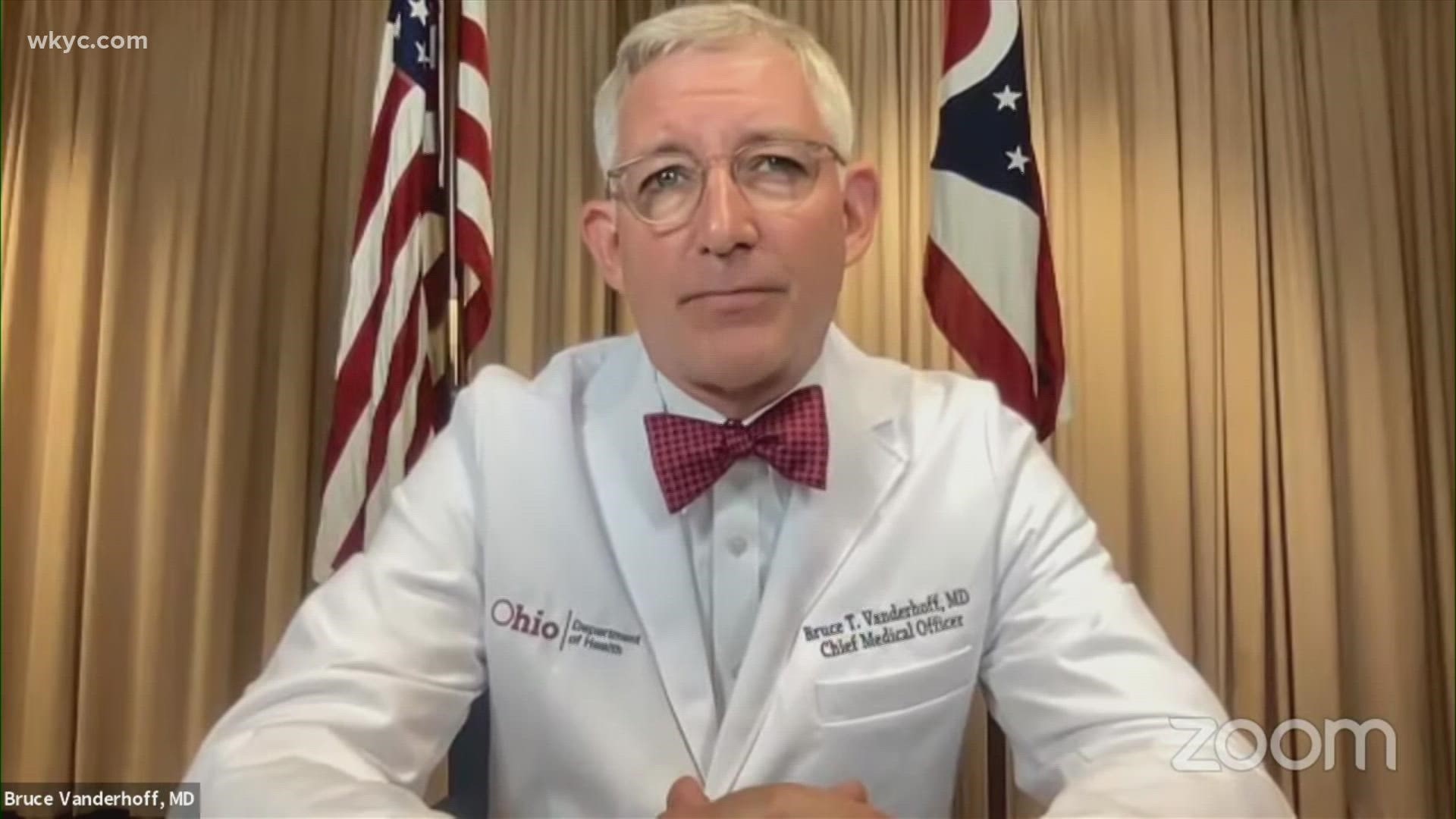COLUMBUS, Ohio — "This unseasonably early increase in RSV coupled with rising pediatric cases of COVID-19 is a recipe for disaster."
Those are the words of Dr. Bruce Vanderhoff, the newly appointed director for the Ohio Department of Health, as he addressed the state's growing number of pediatric respiratory illnesses as COVID-19 cases continue climbing.
“In just a month, our adult hospitals have seen their COVID hospitalizations jump almost five times higher, creating real stress and challenging their ability to maintain some services," Dr. Vanderhoff said. "Sadly, in addition, more Ohio children are now landing in the hospital due to an unexpected summer surge of respiratory illnesses. With COVID-19 on the rise, we may be approaching a perilous situation. At this time, the Ohio Children’s Hospital Association has reported that they’re seeing a wave of respiratory of viruses and illnesses typically seen in winter rather than summer.”
Dr. Vanderhoff outlined these respiratory illnesses as follows:
- Rhinoviruses: These are the leading cause of the common cold. They can trigger asthma attacks and can be linked to sinus and ear infections.
- Parainfluenza virus: Causes upper and lower respiratory illnesses – particularly in infants, young children, older adults and those with weakened immune systems. It can also cause croup, bronchitis and pneumonia.
- RSV (respiratory synctial virus): "In older children and adults, RSV mostly causes mild, cold-like symptoms," Dr. Vanderhoff explains. "But in very young children with smaller airways -- such as toddlers and babies -- RSV can be far more serious, causing trouble breathing, pneumonia and bronchiolitis. RSV infections typically occur in late fall, winter and early spring."
We streamed Dr. Vanderhoff's entire press conference, which you can watch in full below:
“Although, thankfully, our children’s hospitals are not yet at critical capacity levels, we’re very concerned," Dr. Vanderhoff continued. "Emergency departments, ICUs and hospitalization rates are at levels more comparable to levels to what we experience in the winter. It’s not winter. It’s August. Summer. Therefore, it’s likely that the worst is ahead of us.”
He said based on the current wave of pediatric respiratory viruses based on the patterns seen elsewhere that we can expect further increases in COVID-19 case rates "driven by the highly contagious, dangerous delta variant."
"Nationally, there have already been reports of children simultaneously developing RSV and COVID-19," Dr. Vanderhoff said. "While not enough is yet known about the impact of having both viruses together – and whether having COVID could worsen the course of RSV – I firmly believe that most parents of young children don’t want to find that out.”
With children returning to school and other extracurricular activities, Dr. Vanderhoff said all Ohioans need to be cognizant of how we keep our kids safe and healthy.
"The very best way to prevent COVID-19 is vaccination," he said. "Vaccination is simply the best way to protect eligible youth from getting COVID-19. For younger children not currently eligible for the vaccine, the adults and teens around them can substantially insulate them by choosing to be vaccinated.”
He also listed the following methods to stay healthy as we move forward: Get a flu shot, wear a mask, wash your hands and practicing social distancing.
“Do it to protect yourselves, to protect the children around you and to protect the babies too young to protect themselves, who are vulnerable to severe cases of RSV.”
Dr. Vanderhoff has repeatedly urged Ohioans to get vaccinated. He did so again Monday after the FDA granted full approval for Pfizer's two-dose COVID vaccine.
“For any Ohioan who has been waiting to receive the vaccine until full approval is granted, today is the day," Dr. Vanderhoff said. "Pfizer vaccines are readily available at providers across the state and COVID-19 vaccines are our best protection against the virus. Although the FDA approval is good news, our delta wave of COVID-19 continues to drive our numbers ever higher.”
Dr. Vanderhoff, meanwhile, has listed these “three key things” about the delta variant:
- “It is absolutely more contagious. That simply means that it takes less of the virus to go from an infected person’s nose and mouth to go to another person’s nose and mouth.”
- “More contagious than the common cold or the flu. Delta is now more dangerous than prior versions of the virus. We now have data from Canada and from Scotland that show people infected with the delta variant have a much higher likelihood of needing to be hospitalized.”
- "There is mounting evidence that the viral loads associated with the delta variant are higher than what we saw with previous strains of the virus. What that means is that delta is reproducing itself, creating more copies of itself, much more quickly once it gets inside of our bodies.”

